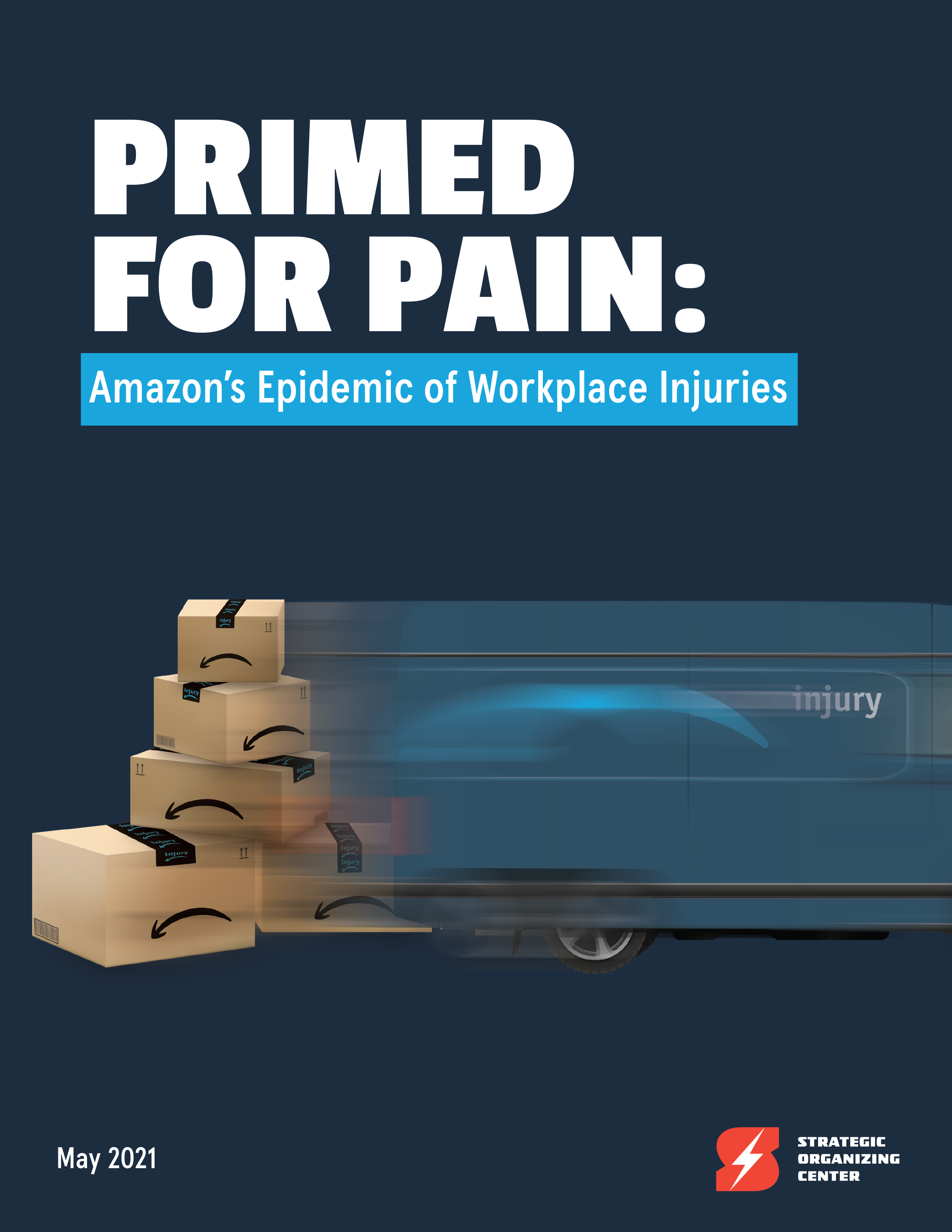Primed for Pain:
Amazon’s Epidemic of Workplace Injuries
As the largest e-commerce retailer in the US, Amazon took advantage of the massive shift to online shopping during the COVID-19 pandemic and saw its US sales increase 39 percent during 2020. The company’s size and influence has expanded at an extraordinary pace. In the ten years between 2010 and 2020, Amazon’s workforce grew from 33,700 to nearly 1.3 million and its annual net income increased from $1.1 billion to $21.3 billion.
The company’s obsession with speed has come at a huge cost for Amazon’s workforce. For more than a decade, Amazon has made headlines for dangerous health and safety conditions in its facilities. In 2019, multiple groups of researchers and journalists analyzed standardized records of worker injuries maintained at Amazon facilities. They found that Amazon’s injury rates were over double the injury rate in the notoriously hazardous general warehousing industry.
Comparing Amazon Injury Rates With Other Employers
Workers at Amazon warehouses are not only injured more frequently than in non-Amazon warehouses, they are also injured more severely. In 2020, for every 100 Amazon warehouse workers there were 5.9 serious injuries requiring the worker to either miss work entirely (lost time) or be placed on light or restricted duty (light duty). This rate is nearly 80 percent higher than the serious injury rate for all other employers in the warehousing industry in 2020 (3.3). Amazon workers who were injured at work also took longer than other workers in the warehousing industry to recover. In 2020 Amazon workers who experienced lost-time injuries were forced off work for an average of 46.3 days – more than a month and a half. That is a week longer than the average recovery time for workers injured in the general warehouse industry and more than two weeks longer than the recovery time for the average worker who suffered a lost time injury.

In addition to comparing Amazon’s injury rates with those of the general warehouse industry, SOC’s analysis looked at Amazon’s injury rates in comparison with Walmart, Amazon’s strongest competitor in retail e-commerce. In all four years covered by this analysis, SOC’s analysis found that Amazon warehouses were far more dangerous than Walmart’s. In 2020, Amazon’s overall warehouse injury rate (6.5/100 FTEs) was over twice that of Walmart (3.0), while Amazon’s severe injury rate (2.6) was more than two-and-a-half times Walmart’s (1.0). Figure 2, below, breaks down the overall injury rates at each company’s warehouses by injury type.

